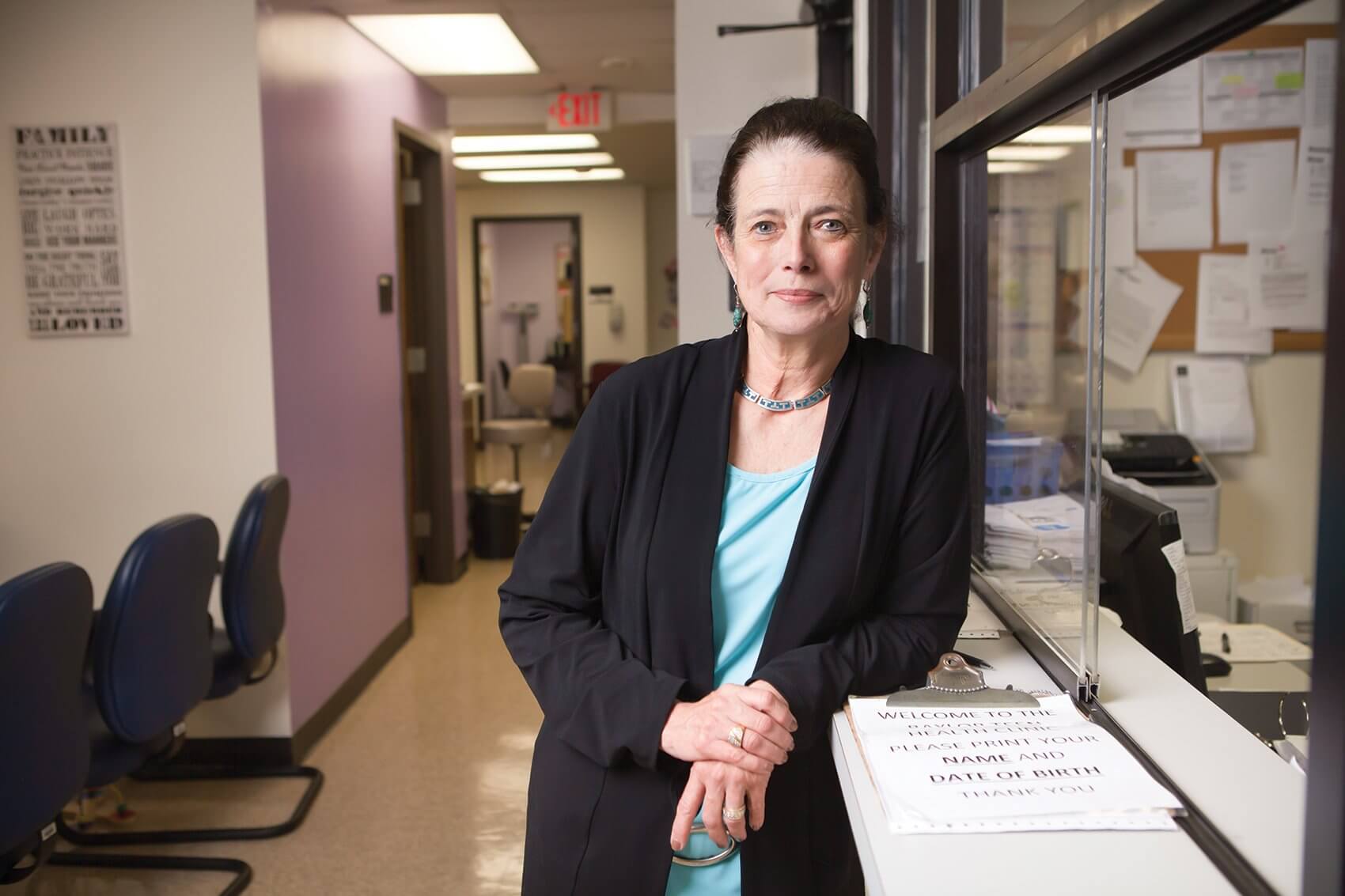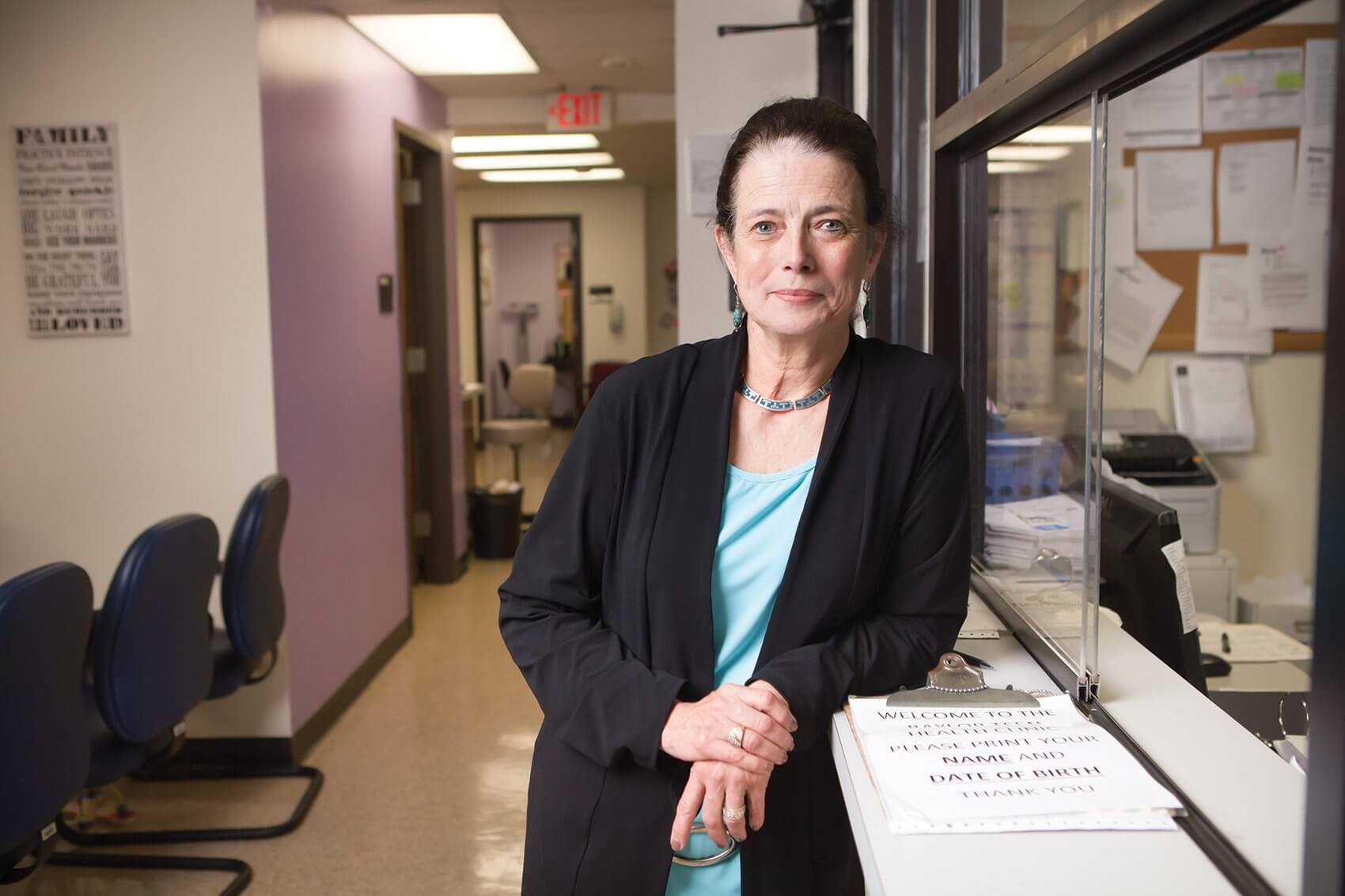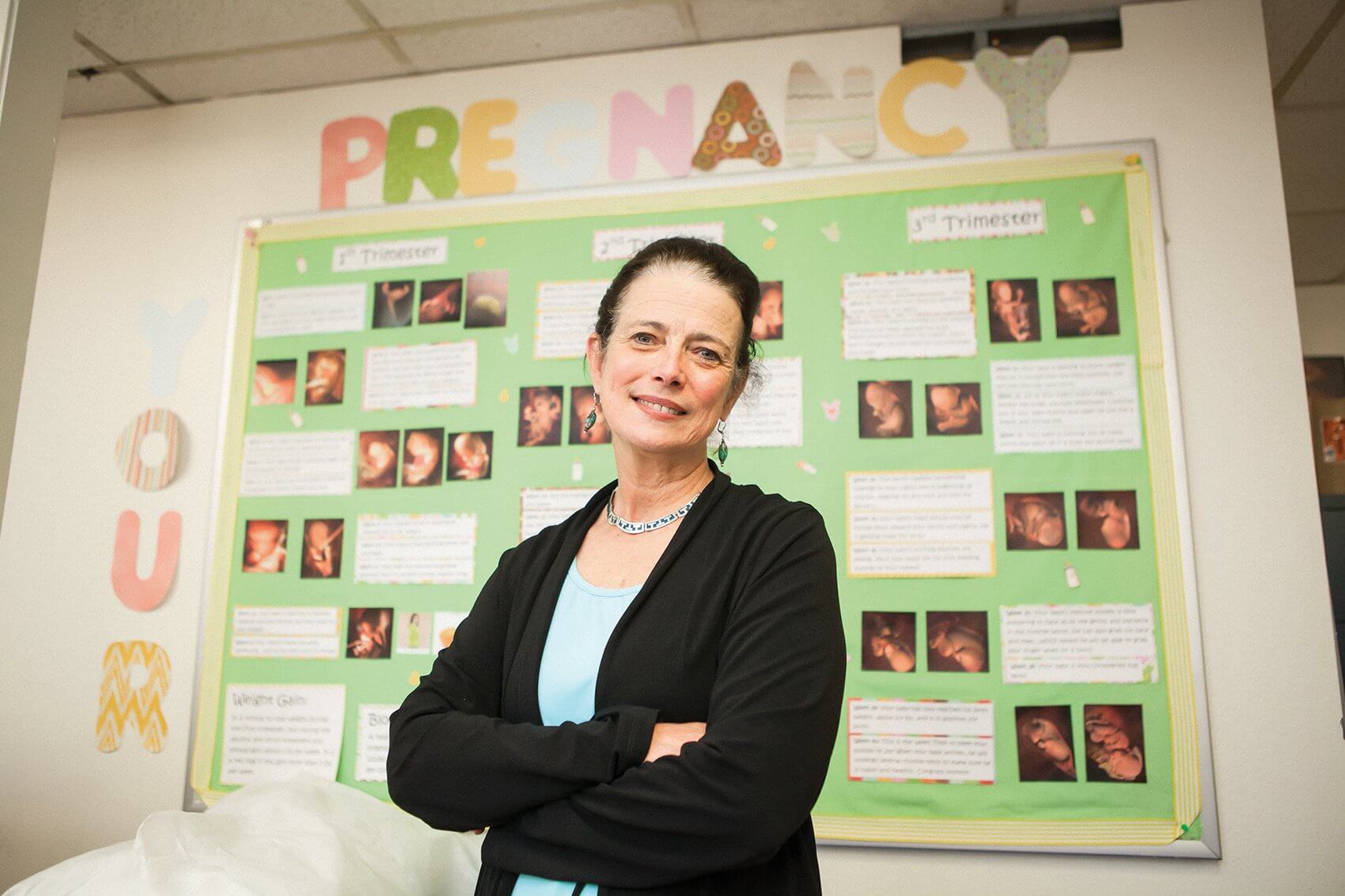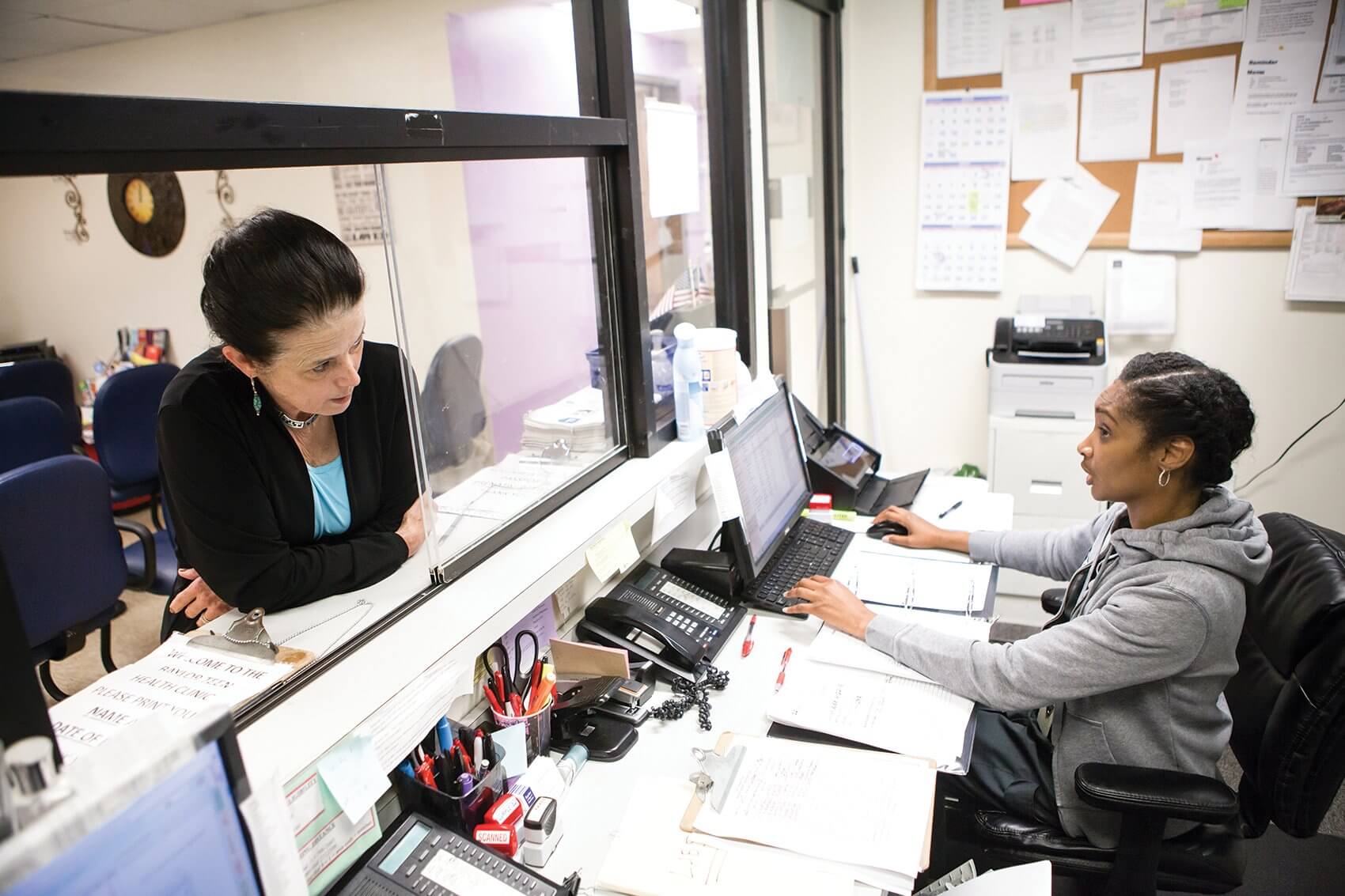Peggy B. Smith, Ph.D.

Peggy B. Smith, Ph.D., director of the Baylor College of Medicine Teen Health Clinic, was drawn to Baylor 44 years ago by the opportunities she saw to help reach the city’s underserved youth. today, with 10 clinics operating across Houston, Smith shared with TMC News her hope for the future of public health and what she wishes more people knew about the population she serves.
Q | Can you tell us about your formative years?
A | In reflecting on my childhood, there were several significant events that influenced my career choice of public health. First, I went to a Catholic girls school, and one of the things I embraced from that culture was that we all have a community obligation to give back. The piece of that belief that became very relevant for me, even in graduate school, was that corporal works of mercy can be translated from the traditional biblical sense to a contemporary format. What I found was that the public health field, and specifically my job at Baylor College of Medicine, is a proxy for that translation.
Secondly, it is personally satisfying to me that I am able to provide quality medical care to people in our community. Public health is so cost effective. I am a pragmatist at heart, and as a pragmatist I know that while our clinics probably cannot afford to offer CT scans, we can afford HPV vaccines that would be more responsive to the primary health care needs than an expensive piece of technology. To me, the cost-effective benefit of public health is just a no-brainer.
The third observation or event was the realization that when you look at our community, most people have trouble getting out of their medical silos, to address local health disparities. What became very clear to me in the last 10 years is that I work in the best medical center in the world. You have two great medical schools, 56 institutions, brilliant leadership, and yet we have people three miles away who really are living in the Third World from a medical point of view. One of the things that has motivated me in this phase of my career is that we have the capacity to bring the best that the Texas Medical Center has to offer to the communities that need it the most. You don’t have to cross an ocean to offer care; you just need to cross the street. Those are some of the observations that led me to a career in public health. In addition, those realizations helped me to understand early on the relative nature of helping one’s fellow man. I am coming up to my 44th year. Here is a sort of pay it forward piece in that I believe we are all six degrees of separation apart. I always tell people that if you need a reminder, get in an elevator with someone who has an active case of TB—you will learn really quickly.
Working in the Texas Medical Center has been very rewarding.
I also believe I have been very lucky to have had the opportunity to work for an institution that has allowed me to have a fascinating career. I often reflect humorously that Baylor College of Medicine has given me a lot of rope. I can run with it or I can hang myself. So far, I have done the first. We now have 10 comprehensive clinics in the inner city and we believe that we provide high-quality medical care not only in the city, but also in the country.
Q | Where did you study?
A | The University of Texas in Austin. I really got a great education. I was able to learn evidence-based and practical solutions in a complex arena.
I have had a nonlinear path that began early on in my work career. I started teaching at Rice University as an assistant professor in the psychology department, being strictly academic. In 1972, a wonderful physician hired me to close a clinic for pregnant girls. The program had lost its funding, the director had died unexpectedly and it needed somebody to analyze the data and ‘put it to bed.’ That wasn’t what I had in mind. The opportunity was very appealing. I was able not only to write up the data, but also to find subsequent funding. Since then, our clinics have expanded from maternity to family planning, STI [Sexually Transmitted Infection] and HIV care and primary health services for youth 13 to 25 years of age. It is comprehensive health care, also offering case management, job training and specialized adolescent care provided by mid-level providers and board-certified doctors. It really has been an interesting evolution in terms of going from a narrow focus to a comprehensive community asset offered by the faculty and staff of a medical school.
Q | How long have you been with Baylor?
A | I am coming up on my 44th year. This can be somewhat embarrassing; I always win the contest, when asked in professional meetings, ‘Who has been in the field the longest?’
One of the things that pushed me into public health was the opportunity available with Baylor College of Medicine and being in the right place at the right time. Serendipitously, my husband, in a spontaneous moment, decided to run for the legislature.
Watching the subsequent process as a spouse, I received great on-the-job training in terms of how public policy is molded, translated and implemented in a community. What I have become comfortable with is the concept that public health is political. If you don’t speak up, by default you get what you deserve. The expertise that we have gathered at the medical school and from the clinic’s 80 employees has allowed me to have a very evidence-based approach in public health and to try to make recommendations to people who embody the culture of Texas and who grasp the economic impact of not doing some upstream prevention. It has been interesting and gratifying to be able to try to translate what happens if you do something, versus what happens if you don’t. For example, how do you make available meningococcal vaccines to inner-city college-bound youth? Such immunizations can be very expensive for a family who is living on $30,000 a year, but without it, you can’t go to community college or a four-year institution in the state. We have learned how to work with those regulations and provide those medical services to youth, either from public funds or from private philanthropy, to fill in those gaps.
Q | Can you describe the kind of services offered in your clinics?
A | Our mission is to provide comprehensive primary and reproductive health care to youth 13 to 25 years of age. This also includes social support as their medical home. I believe our physicians are some of the best in the world, as they are board certified and sub-specialty trained in adolescent health. We have extended our eligible patient age to 25 years, as we believe in the brain research that tells us that at about age 25, critical thinking skills replace concrete operational thought.
There are a couple of things that are unique about our clinics in terms of emphasis and scope of service. In 1980’s we decided that if you are going to work in the areas of maternity and sexually transmitted infection, for women, we needed to provide care for the other 50 percent of the equation and that is the male. So we initiated a multi-phased male program, including a male scholarship program for high school completion and/or job training (Project Bootstrap) male medical clinics and HIV and STI screening, treatment and linkage to care. In working with young men, we are sensitive to the fact that women may say, ‘How do I look?’ But men are very keyed in to, ‘What do I do?’ We have male social workers to help with case management and job training. Several major businesses in our community also collaborate with our male initiatives to provide employment subsequent to successful completion of our program.
Our clinics also provide a one-stop medical approach and we have an extended Class D pharmacy, stocking all the medicines that are necessary for primary and reproductive health care needs. In addition, our services are provided at little or no cost, and no one will be turned away for inability to pay. We feel it is a great investment economically, not only from avoiding morbidity associated with some of the diseases that we see, but also because we prepare these young people to think more about getting out of high school and into college and being productive citizens. Many of our patients have had a hiccup in their life course, but are now very successful and contributing Houstonians.
Q | Tell us about your work with teen moms.
A | This is an interesting and very rewarding aspect of our clinical practice. As a medical school and as part of the Texas Medical Center, we believe in an evidence-based approach. We all like to do ‘good,’ but unless the outcomes are parametrically confirmed, the results could have occurred by chance and not been a function of the intervention. Our emphasis, therefore, is on initiatives that are evidence-based. For the young moms, we have adapted such a program called ‘Centering Pregnancy,’ and it is group prenatal care.
The young women sit in a circle and participate in a series of curricular sessions emphasizing perinatal care and child development. As part of the program, they also receive their routine prenatal exam along with the associated lab screenings. The unique part of our approach is that we include the father of the baby and his extended family, as available. We acknowledge that whether or not the couple chooses to marry, the father has the opportunity to have an important relationship with his child. Through Centering Pregnancy, we provide prospective dads information and training not only on the medical aspects of the pregnancy, but also on parenting and child development. We also have a home visitation program called ‘Nurse Family Partnership.’ We enroll first-time moms during their pregnancy, and a registered nurse makes home visits for the first year of the baby’s life and provides social support.
What we found is while the neonate may be born healthy as the result of quality prenatal care, our patients and their infants may develop issues because of negative psychosocial problems. This home visitation program will proactively monitor various benchmarks and disease-related problems for the dyad. The issue of postpartum depression, for example, is often missed in this cohort of young moms. We are able to intervene in a way that the baby isn’t put in harms way because the mom needs help. Thus, through our comprehensive and integrated approach, we enroll the at-risk young mom who starts in Centering Pregnancy and is followed prenatally and postpartum via home visitation. At the same time, we become her medical home, providing all of her care until she is 25.
The concept of a medical home for our at-risk patients is important for a couple of reasons. First, when we talk about a medical home, we provide care that promotes ‘best practices,’ especially for inner-city patients. This is especially relevant in regards to the new, more effective contraceptive methods. These long acting reversible contraceptive methods, also referred to as ‘LARCs,’ have advanced birth control from technology of the 1960s, vis-à-vis ‘Ozzy and Harriet,’ to very effective preventive methods. For example, using the technology as seen in Nexplanon, a patient who has a single insert in her forearm the size of a small matchstick can be protected for up to three years from an unplanned pregnancy. The new generations of intrauterine devices also provide similar benefits. New technology for HIV screening also improves prevention of the spread of this infection, as well as early diagnosis and hopefully linkages to care. These new technologies, seen as best practices, make a huge difference, whether you look at the statistics for adolescent pregnancy documenting a 10-year decline in teen moms or the data on improving outcome management for HIV-positive individuals. Moreover, these two health outcomes are very relevant to patients we see and can greatly benefit from state-of- the-art interventions.
Q | How have you seen things change in your 40+ years at Baylor?
A | How things have changed! When I joined the OB-GYN faculty, I thought the biggest problem was adolescent pregnancy. That is no longer the big issue. Currently the issues of STI and HIV are huge. There are so many misconceptions about those two conditions, and some people are uncomfortable, unwilling or unable to understand we are all at risk. In my opinion, there are several reasons for such a conundrum. First, I don’t know if such positions are the vestiges of a Victorian set of standards, but we are very slow to talk about these issues and sometimes we become confused. Second, I believe that the problems are more complicated. Third, even with the Affordable Care Act, medical screening for these diseases is not widely available for our age group, as many are unemployed.
In addition, the piece that I find is an aha moment for me is that we are now working with adolescents where apparently there are no available parents. Whether it be the result of immigration, incarceration or children being raised by elderly grandparents, the social and family support recommended by a vari- ety of behavioral theories are missing. Parents—no matter what size, shape or gender—are important.
Q | How are patients referred to the clinic?
A | We have several different vectors through which we receive referrals, but three methods really stand out. First, because we have a strong contractual relationship with the school districts, the school nurses are aware of our services and are strong advocates. In addition, in Precinct One, under the leadership of Commissioner El Franco Lee, a community collaboration, the North East Adolescent Project, has a relationship in 17 schools. Our social workers work closely with their nurses and principals, teach in the schools in some of the health classes and also accept referrals from the school staff. Finally, we also have an electronic platform—at teenhealthclinic.org—that provides an Internet portal to our services as well as a GPS locator to find which clinic is closer to the teens’ homes. This platform is user-friendly for adolescents. I always say, if you’re going to hunt moose, you have to go where the moose are—they aren’t on the telephone, they are all on their iPhone or Android device. In addition, if a teen has a confidential question, we have an interactive blog, staffed by two avatars named Tye and Taft. A patient can click on their image and ask them questions, which will be answered within a 24-hour period. We have actually analyzed the data and the number one question is not a medical one, it is financial and that is, ‘How much does all of this cost?’ Even though kids may not be gainfully employed, they are acutely aware that services are hard to come by, especially those that are subsidized. The communiqué that I find most interesting is that any given week, I will get an email on my Baylor College of Medicine server that will say, ‘My name is Joe and I think I have an STI. Can you get me in touch with someone who can tell me how to get treatment?’ Our social workers then step in and make an appointment for the patient.
Q | What do you wish more people understood about the population you serve?
A | There are several components to this answer. First, I would like the population at large to understand that the youth that we care for are teenagers first and sometimes, like all teenagers, they do stupid things. Some of them may have taken sexual risks, which could be a function of curiosity or lack of parental supervision. But they are usually good kids who just need a little help.
The second component to this answer is I would like people to understand that these kids are more like their own children than not. Sometimes they lack economic advantages, but many still have valuable ideals and ambitions. If we can intervene early through prevention and a little ‘wind under their wings’ as a friend in the system, they have a good chance to succeed.
Finally, the support of our community—which enables us to provide these services—is key. Some of the most valuable medical services that we provide are made possible through the caring and generosity of others. I am able to purchase state-of-the-art contraceptive devices and offer scholarships to deserving young men because of such guardian angels in our city.
Q | What do you hope for the future?
A | I have been fairly successful in figuring out how to fund and evaluate these clinics by virtue of good luck
and some very unique opportunities. Looking forward, in planning for the future, we have established an endowed professorship, which will support future initiatives and will fund the program’s leadership and its continued momentum. Such an endowed resource will enable the college to attract someone of a national caliber who has the scientific proclivity and understands the interconnectedness of policy and public health.






